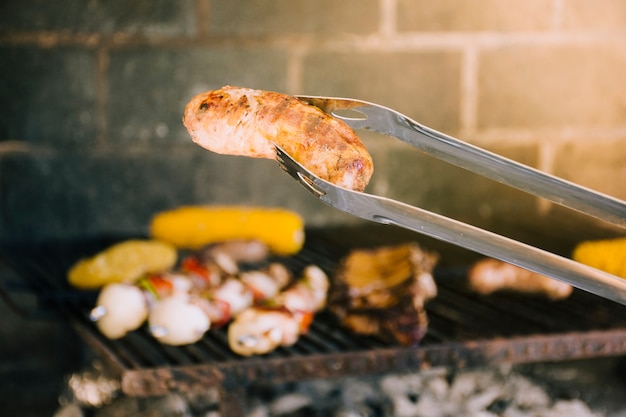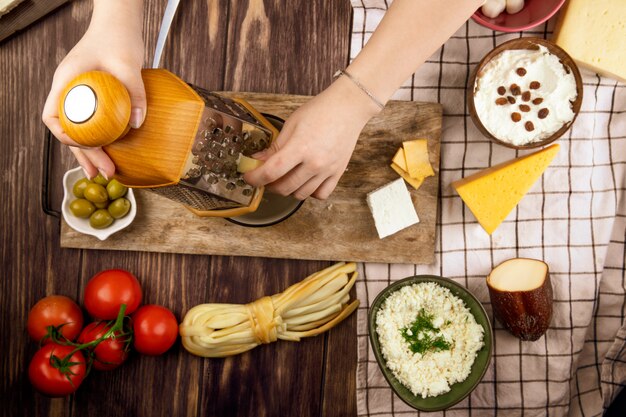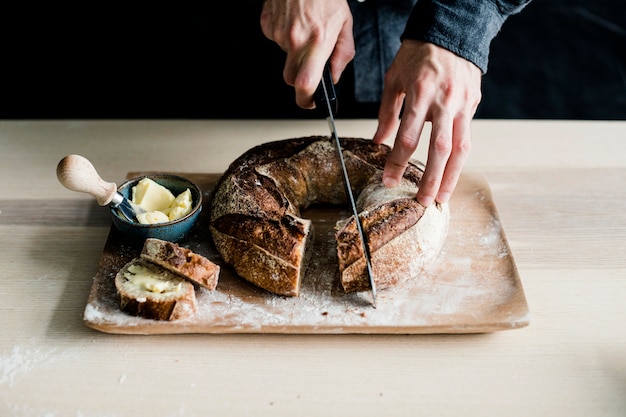You know, sometimes you just crave something different, something with a bit of history and a whole lot of flavour. That’s where boudin comes in, my friend. Not your average sausage, this Cajun and Creole delight is a rice-stuffed masterpiece that’s been delighting taste buds for generations. It’s a culinary adventure, a celebration of textures and aromas, and a dish that truly captures the spirit of Louisiana.
Now, I’ve been making boudin for years, and it’s always a hit. My family loves it, and it’s become a staple at our gatherings. There’s just something special about that satisfying crunch of the casing, the fluffy rice, and the perfectly seasoned pork. And the best part? It’s not as complicated as it seems.
So, put on your apron, grab a good playlist, and get ready to embark on a culinary journey. This step-by-step guide will walk you through the process of making your own boudin sausage, and you’ll be surprised at how easy it is to create this delicious Cajun classic. Trust me, the results will be worth every minute of your effort.
(Part 1) The Boudin Basics: Unveiling the Ingredients

Let’s start with the foundation of any good boudin: the ingredients. It’s all about getting those flavours just right, and it’s not just about throwing things together. There’s a real art to it, and it’s a process that’s been refined over generations.
1. The Star of the Show: Pork
Now, we’re talking pork here. Forget the bland stuff you find in the supermarket. We’re looking for good, high-quality pork, preferably from a butcher you trust. I usually go for a combination of pork shoulder and pork belly. The shoulder gives you that leanness and flavour, while the belly adds richness and juiciness. It’s a perfect balance.
2. The Filling: Rice
Next up, the rice. You can’t make boudin without it. long-grain rice is the traditional choice, and for good reason. It cooks up beautifully, holding its shape and soaking up all those delicious pork juices. But don’t be afraid to experiment. wild rice, brown rice, or even a blend can add a unique twist. Just make sure it’s cooked properly, and you’re good to go.
3. The Spice Blend: Cajun and Creole Flavours
And now, for the magic ingredient: the seasonings. This is where the true character of boudin shines through. Cajun and Creole spices are the backbone of this dish, adding a symphony of flavour that’s both spicy and savory.
Think paprika, cayenne pepper, garlic powder, onion powder, black pepper, and sometimes a touch of thyme or bay leaf. The exact blend is up to you, and every family has its own secret recipe passed down through generations. That’s the beauty of boudin – it's a personal journey of flavour.
4. The Casing: A Bite of Tradition
Finally, we have the casing. This is what holds everything together and gives boudin its signature shape. You can find them at most butcher shops, and they come in various sizes. The classic choice is a natural casing made from pig intestines. It adds a delightful crunch and a sense of authenticity. If you prefer, you can also opt for synthetic casings. I’ve tried both, and the natural casings definitely win for me.
(Part 2) Prepping for Boudin: Laying the Foundation

With our ingredients assembled, we're ready to start the preparation process. This is where the magic begins, and where your culinary skills will truly shine.
1. Cooking the Rice: A Perfect Base
First, let’s tackle the rice. Now, this isn’t your average rice cooking. We’re aiming for a fluffy, slightly undercooked texture. Remember, it will continue cooking once it’s stuffed into the casing. I usually add a pinch of salt and a dash of cayenne pepper to the rice while it’s cooking. It’s a subtle flavour infusion that adds depth to the final dish.
2. Prepping the Pork: A Symphony of Textures
Now, it’s time to get those pork pieces ready. Cut them into small pieces, about an inch or two in size. This ensures even cooking and a tender, juicy result. Once your pork is diced, it’s time for the seasoning. A generous sprinkle of your favourite Cajun blend will transform these simple pieces into a flavour powerhouse. Remember, this is your chance to personalize your boudin.
3. Cooking the Pork: Building the Base Flavour
With the pork prepped, we’re ready to cook. I prefer a good cast iron skillet for this. Heat it up, add some oil, and let the pork sizzle. Cook it until it's browned on all sides and nearly cooked through. Don’t forget to drain off any excess fat. You want your boudin lean and flavorful.
4. Blending the Boudin: A Symphony of Taste
Now, the fun part: blending the flavours. Take your cooked pork and rice and mix them together in a large bowl. Then, add your seasonings. This is where you’ll taste and adjust to create the perfect balance of spice, savoriness, and just a hint of sweetness. Don’t be afraid to experiment and find the blend that speaks to your taste buds.
5. Prepping the Casings: Preparing for the Stuffing
Last but not least, it’s time to get those casings prepped. Soak them in warm water for about 30 minutes. This softens them and makes them more pliable, making them easier to stuff.
(Part 3) The Stuffing Art: Transforming Ingredients into Sausage

We’re now at the heart of the boudin making process – the stuffing. This is where those delicious ingredients come together and transform into a sausage. It might seem a bit daunting at first, but with a little patience and practice, you’ll master this art.
1. Setting Up Your Sausage Stuffer: The Tools of the Trade
First, get your sausage stuffer ready. A hand-crank stuffer is perfect for this, but if you have an electric one, feel free to use it. There are various types of stuffers, but they all work on the same principle: they force the boudin mixture through the casing.
2. Attaching the Casing: Securing the Sausage
Take your casing and tie one end with a piece of string or a twist tie. You can also use a casing clamp for a secure hold. Then, attach the open end of the casing to the stuffer nozzle.
3. Filling the Casing: The Crucial Step
Now for the stuffing! Pack your boudin mixture into the stuffer. It’s a bit of a workout, but a satisfying one. Gently push the mixture into the casing, making sure not to overfill it. Leave some space at the end to tie it off.
4. Tying Off the Sausage: Completing the Process
Once the casing is filled, tie off the end with a string or twist tie. You can also pinch off the casing and twist it to create a sealed end. You can make your boudin as long or as short as you like, just be sure to tie off each link to keep it compact.
(Part 4) Cooking Your Boudin: Unveiling the Flavours
Your boudin sausages are ready! Now, it’s time to cook them to perfection. There are several methods to choose from, each with its own unique flavour profile.
1. Frying: A Classic Cajun Method
Frying is a classic way to cook boudin. It creates a crispy exterior and allows the flavors to really develop. Heat some oil in a large skillet over medium heat and gently fry your boudin until it’s golden brown and cooked through. Be careful not to overcrowd the skillet, as this could lead to uneven cooking.
2. Grilling: A Smoky Delight
For a more flavourful experience, try grilling your boudin. Preheat your grill to medium heat and cook the sausages for about 10-15 minutes, turning them every few minutes for even cooking. The grill will add a delicious smoky flavor to your boudin. For an extra touch of smokiness, you can even add some wood chips to your grill.
3. Baking: A Healthier Option
Baking is a great option if you’re looking for a healthier way to cook boudin. Preheat your oven to 350 degrees F (175 degrees C). Place your boudin on a baking sheet and bake for 20-25 minutes, or until cooked through. You can also brush the boudin with a little bit of barbecue sauce or honey for extra flavour.
(Part 5) Serving Up Your Boudin: A Culinary Celebration
Your boudin is cooked and ready to be enjoyed! Now, how to make the most of this Cajun delight? Here are some serving ideas and tips to create a true boudin feast.
1. Traditional Boudin Plates: A Classic Presentation
A classic way to serve boudin is on a plate with all the fixings. Think diced onions, tomato slices, a dollop of mustard, chopped parsley, and your favourite dipping sauce. Whether you go for a classic hot sauce or a spicy mustard, the flavour combinations are endless.
2. Boudin Balls: A Bite-Sized Treat
For a more manageable option, try boudin balls. Simply take your cooked boudin and form it into small balls. You can then fry, grill, or bake them to perfection. Boudin balls are a fantastic party appetizer or a fun snack for any occasion.
3. Boudin Po'boys: A Cajun Classic
For a more substantial meal, try a boudin po’boy. This classic Cajun sandwich will surely please. Simply take your cooked boudin and stuff it into a French baguette. Add some lettuce, tomato, and onion for a crunchy bite, and don’t forget a generous drizzle of your favourite sauce.
(Part 6) Storing Your Boudin: Keeping the Flavour Fresh
You’ve put a lot of effort into making your boudin. Now, you want to enjoy it for as long as possible. Here’s how to store it properly so it stays fresh and delicious.
1. Refrigerator Storage: Keeping it Fresh
The best way to store boudin is in the refrigerator. Place it in an airtight container or wrap it tightly in plastic wrap. It will keep for about 3-4 days in the fridge.
2. Freezer Storage: Long-Term Preservation
For longer storage, you can freeze your boudin. Wrap it tightly in plastic wrap and then place it in a freezer bag. It will keep in the freezer for up to 3 months.
3. Reheating Boudin: Bringing Back the Flavour
When you’re ready to eat your frozen boudin, just thaw it in the refrigerator overnight. You can then reheat it in a skillet, in the oven, or even in the microwave.
(Part 7) Boudin Inspiration: Exploring New Possibilities
Now that you’ve mastered the basics, it’s time to get creative! There’s a whole world of boudin possibilities out there, just waiting to be explored.
1. Flavour Explorations: Adding Your Personal Touch
Get adventurous with your seasonings! Try adding a touch of smoked paprika, a pinch of cumin, or a dash of dried oregano. You can also experiment with different types of rice, like wild rice or black rice, for a unique flavour and texture.
2. Creative Additions: Elevate the Flavour Profile
Don’t be afraid to add other ingredients to your boudin. Think about chopped green peppers, diced onions, or even a handful of your favourite cheese. You can also add a bit of chopped sausage, like chorizo or italian sausage, for a more complex flavour profile.
3. Boudin Variations: A Culinary Journey
There’s a whole world of boudin variations out there. You can find boudin blanc, which is a white boudin that doesn’t contain any blood. You can also find boudin noir, which is a black boudin that’s made with pig’s blood. Explore different styles of boudin to see what you like best.
(Part 8) Boudin Culture: A Celebration of Cajun and Creole Flavours
Boudin isn’t just a dish; it’s a cultural icon. It’s a testament to the rich culinary heritage of Cajun and Creole communities, a dish that reflects their history, their traditions, and their love of flavour.
1. The History of Boudin: A Journey Through Time
Boudin has a long and fascinating history. It’s believed to have originated in France, where it was a popular dish among farmers and labourers. It was brought to Louisiana by French settlers, and it quickly became a staple food in Cajun and Creole communities.
2. Boudin Festivals: A Celebration of Tradition
Boudin is so beloved in Louisiana that there are even festivals dedicated to it. The Mamou Boudin Festival, held every year in Mamou, Louisiana, is one of the most popular. These festivals are a celebration of Cajun culture and a chance to sample some of the best boudin in the region.
3. Boudin Recipes: A Legacy of Flavour
Boudin recipes have been passed down through generations of families. Every family has its own secret blend of seasonings and its own unique way of preparing the sausage. This makes boudin a truly personal dish, a way to connect with your heritage and share your love of food with others.
FAQs
Here are a few frequently asked questions about boudin sausage.
| Q: What is boudin sausage? | A: Boudin sausage is a traditional Cajun and Creole dish made with rice, pork, and seasonings, stuffed into a casing. It's a flavorful and versatile sausage that can be cooked in various ways and enjoyed in many different dishes. |
|---|---|
| Q: What is the best way to cook boudin sausage? | A: There are several ways to cook boudin sausage, including frying, grilling, baking, and even boiling. The best method depends on your personal preference and what you're planning to use the boudin for. |
| Q: Where can I buy boudin sausage? | A: Boudin sausage is widely available in Cajun and Creole areas, especially in Louisiana. You can find it at butcher shops, grocery stores, and even at some restaurants. |
| Q: How long does boudin sausage last? | A: Fresh boudin sausage will last for 3-4 days in the refrigerator if stored properly. You can also freeze boudin sausage for up to 3 months. |
| Q: What are some creative ways to use boudin sausage? | A: Boudin sausage is incredibly versatile and can be used in many different dishes. You can enjoy it on its own, use it in sandwiches, add it to soups and stews, or even make boudin balls. |
So there you have it, folks. Now you’re equipped to conquer the world of boudin sausage. Whether you’re a seasoned Cajun cook or just getting started, this guide will help you create a delicious and authentic boudin experience. And remember, every batch of boudin is a chance to experiment, to create, and to celebrate the rich traditions of Cajun and creole cuisine.
Happy cooking!
Everyone is watching

Corn on the Cob: The Ultimate Guide to Perfectly Cooked Ears
Healthy MealsAh, corn on the cob. Just the name evokes images of sunny days, barbecues, and that sweet, juicy flavour that ...

Perfect Pork Roast Oven Cooking Time: A Guide to Delicious Results
Healthy MealsThere's something truly satisfying about a perfectly roasted pork. The aroma alone is enough to make your mout...

Scallops: The Ultimate Guide to Perfect Cooking
Healthy MealsAh, scallops. Those delicate, sweet, and utterly delicious morsels of the sea. They hold a special place in my...

Ham Cooking Time: How Long to Bake, Smoke, or Boil a Delicious Ham
Healthy MealsAh, ham. It's a classic, isn't it? A real crowd-pleaser, especially around holidays. And when done right, it'...

Spaghetti Squash: The Ultimate Guide to Cooking and Serving
Healthy MealsRemember that time you saw spaghetti squash at the supermarket, looking all bumpy and strange, and thought, "W...
